THE EXHIBITION SPACE OF 1,000 SQUARE METRES DISPLAYS THE HISTORY OF THE BRAND AND MANY WORLD PREVIEWS, INCLUDING THE NEW LUMINOR DUE CASE, THE NEW LUMINOR MARINA COLLECTION WITH THE P.9010 MOVEMENT AND THE REMARKABLE PANERAI MINUTE REPEATER.
It is an invitation to dive into time, to discover the past, the present and the future of the Officine Panerai high quality watchmaking brand: the exhibition "PANERAI - DIVE INTO TIME" will be open from 18 to 21 May 2016 in the fascinating crypt of the former church of San Pancrazio, home of the Marino Marini Museum in the centre of Florence.
The exhibition will include a previously unseen collection of creations from the various periods of the fascinating history of the Florentine brand: the brilliant insights in the field of optics and mechanics and the first instruments made by the Panerai family at the start of the last century; the iconic watches created for the Royal Italian Navy from the 1930s to the 1950s; a panorama of the models created during the period of almost 20 years in which the Richemont Group has owned it, a period when a watch known only to collectors has become one of the most admired international brands of high quality sports watchmaking. The journey through Panerai's past ultimately leads to the discovery of the present and to the vision of the future of the brand, which on the occasion of this exhibition will present a world preview of a remarkable selection of new models.
THE NOVELTIES: LUMINOR DUE, P.9010 CALIBRE AND MINUTE REPEATER
The most interesting aspect for all Panerai enthusiasts is the rich selection of new models presented on the occasion of the Florentine event: 12 new watches which demonstrate how the brand interprets the relationship with its own history in ways which are always new, continually renewing itself from the point of view of technical content and function but always maintaining its own very strong distinctive identity.
The most revolutionary new feature is the presentation of the new LUMINOR DUE case, inspired by the lines of the classic Luminor of the 1950s but subtly redesigned to accentuate the versatility of a watch which is a perfect synthesis of sporting character with an elegance enabling it to be worn on every occasion, a blend of distinctive design and sophisticated watchmaking technology.
A considerable reduction in the thickness and weight of the case is a feature of the new Luminor Marina collection, a design always highly esteemed by Panerai collectors. In Florence no fewer than six new models are presented, all fitted with the new automatic P.9010 calibre with a power reserve of three days.
The Florentine exhibition is also the occasion for the presentation of the world preview of the most complicated watch ever made by the Panerai Manufacture: the Radiomir 1940 Minute Repeater. With its remarkable twin repeater mechanism of hours and ten-minute intervals, which can chime both the local time and that of a second time zone, the new watch is presented in a context which enhances its absolute uniqueness.
THE EXHIBITION
The exhibition "PANERAI - DIVE INTO TIME" will be held in the ancient crypt of the former church of San Pancrazio, an impressive underground vault of almost 1,000 square metres symbolic for its ability to recount the layers of history and various periods of a Florence which is part of the identity of the Panerai brand. The crypt, normally used as an exhibition space for contemporary art, preserves fascinating traces of most ancient history of the church of San Pancrazio, whose origin dates back to the early 9th century. Above the crypt are the collections of the Marino Marini Museum, consisting of the works given to the city of Florence by the great Italian sculptor, painter and engraver (1901-1980), and the remarkable Cappella Rucellai with the Chapel of the Holy Sepulchre by Leon BattistaAlberti, enabling the visitor to enjoy a journey through time expressed by art and beauty.
In the darkness of the crypt, Alessandro Colombo - Studio Cerri & Associati, designers of the exhibition, have skilfully used materials, lights and digital devices to create a display in which visitors become immersed, surrounded by an unprecedented selection of iconic models which have written the history and upheld the international success of Panerai watches. These exemplify their revolutionary strength and visibility, the brand's association with the sea, its constant, subtle design innovations and the technical excellence of the Manufacture of Neuchâtel.
THE AREAS
The visitor to the exhibition passes through successive areas which are arranged both chronologically and thematically.
Early history (1936-1997): Here are the first watches and instruments (including compasses, torches and depth gauges) created by Panerai for the Italian Navy, followed by the first commercial launches before the brand became part of the Richemont Group. The story is illustrated by some 20 examples, from the Radiomir of 1936, the first military diver's watch in history, through the Luminor of the 1940s and 1950s, followed by the Slytech models created at the request of the American actor Sylvester Stallone in 1995.
Recent history (1998-2016): This area displays a remarkable selection of 60 creations of the Panerai Manufacture, from the year of the brand's international relaunch as a high quality sports watchmaker up to the present day. In this period of almost 20 years, Panerai has presented new versions of its historic models, developing their most distinctive themes: the luminosity of the dial, the diver's watches and links with the sea, the long power reserve and the search for excellence in materials.
Luminor Marina: Six new models of the brand's most famous watch are here presented in various versions using the P.9010 automatic calibre, with a power reserve of three days. The new movement has made it possible to create very light, slim cases without affecting the highly distinctive identity of the Luminor Marina.
LUMINOR DUE: The past and the future of Panerai are perfectly synthesised in the new LUMINOR DUE case, presented in Florence in a world preview of four new watches in steel and red gold. This is a subtle revolution for Panerai which for the first time is offering a Luminor case perfectly faithful to its own DNA but little more than 10 mm thick.
The Manufacture: A master watchmaker from the Panerai Manufacture in Neuchâtel gives a practical demonstration of the remarkable skills which are needed to work on the sophisticated movements created by Panerai. The Manufacture area also displays a remarkable collection of Panerai movements, a technical heritage which places the Florentine brand in the Olympus of high quality sports watchmaking.
The Excellencies: The technically most complicated examples created by Panerai, such as the sophisticated tourbillons and the creations made as a tribute to Galileo
Galilei, are exhibited in an area which culminates with the Jupiterium, the remarkable planetary timepiece which reproduces in real time, from the viewpoint of the Earth, the exact position of the stars, the Sun, the Moon and Jupiter, with the four satellites discovered by Galileo orbiting around it.
Minute Repeater: The new Radiomir 1940 Minute Repeater Carillon is presented in another stunning world preview at the Dive Into Time exhibition. The most complicated watch ever made by Panerai is displayed in a fascinating old room where the properties of the watch and in particular its ability to chime the hour, ten-minute intervals and single minutes through a sophisticated systems of gongs and hammers can be appreciated.
The Radiomir Firenze: The last experience for visitors to Panerai - Dive into Time is to watch a master engraver demonstrating the ancient technique of engraving the case with a "sparsello" engraving tool. The engraver is working on the case of the Radiomir Firenze, the watch sold exclusively in the historic Panerai boutique in the Piazza San Giovanni, decorating it with motifs inspired by Florentine iconography. In this exhibition this valuable model is presented as a preview with the movement finely engraved as well.
THE MARINO MARINI MUSEUM
The valuable collection given by Marino Marini to the city of Florence and the subsequent restoration of the former church of San Pancrazio in 1988 resulted in the foundation of the first museum of contemporary art in the city, entirely devoted to this great Tuscan artist.
The Marino Marini Museum was the result of the joint will of Marino and Marina Marini, who at the end of the 1970s saw the church of San Pancrazio as the ideal place to display the remarkable gift of his works which the artist made to the City of Florence a little before his death. The renovation of the church has created an arrangement designed to convey the fascinating world of Marino Marini, one of the most important figurative artists of the 20th century. In large, well-lit spaces with multiple viewpoints, a complete summary of the artist's work is displayed, stressing the themes most dear to him.
The exhibition is arranged around the impressive equestrian group of the Horse and Rider (1957-58), which is at the epicentre of the former liturgical space and bathed in the natural light from the large apsidal glass window. Marino held that natural light was a compulsory element in reading his work and this criterion is fully embraced and used in the museum, while the variety of viewpoints avoid the artist's aversion to a "work on a pedestal", a concept far away from the poetic Marini's vision.
The museum is devoted exclusively to works by Marino Marini: 183 pieces of sculpture, paintings, designs and engravings, all exhibited on the four levels of San Pancrazio. Their arrangement is thematic rather than chronological, being interpreted more as a state of mind than as an iconographic subject in the normal sense.
MARINO MARINI
Sculptor, painter and engraver, Marino Marini (1901-1980) was an important figure in the Italian cultural and artistic world and, above all, one of the most significant figurative artists of the 20th century.
Marino Marini was born in Pistoia in 1901 and he entered the Accademia di Belle Arti in Florence in 1917. In 1929 he went to Paris, where he came into contact with De Pisis, Picasso, Maillol, Lipchitz and Braque. In the 1930s he devoted his artistic research to two main themes: the horse and rider, and Pomona, the Roman god of fertility. In 1938 he married Mercedes Pedrazzini, affectionately known as Marina, who was with him all her life. In 1940 moved from teaching in Monza to take up the sculpture teaching post at the Brera Academy in Milan, which he held until 1943. Then for the rest of the war he took refuge in Switzerland. In that period he met Fritz Wotruba, Germaine Richier and Alberto Giacometti and he came into contact with the most advanced artistic world in Europe. In 1948 he met Henry Moore, with whom he struck up a friendship which was particularly important for his artistic production, and Curt Valentin, a dealer who introduced his work to the art markets of Europe and the United States. During his stay in America Marino came to know Arp, Calder, Dalì and Tanguy. From the 1970s museums devoted to him came into being. Marino died in Viareggio in 1980. A few years
later, in 1988, the Museo Marino Marini in Florence opened, following a donation of works to the Tuscan capital, the artist's favourite city.
Marino Marini was one of the most interesting figures in the cultural and artistic panorama of the 20th century. In the 1930s and 1940s the artist delved into the development of "pure" form, by recovering and reworking Etruscan and mediaeval traditions in a modern key. The theme of the horse and rider which appeared in those years would be a constant in his work, almost a symbolic sign of his personal vision of the world. From 1943 signs of changes can be seen in the plastic rendering of the subject: the forms open up, becoming violent and full of tension; the relationship between horse and rider becomes increasingly dramatic and confrontational. In the post-war period Marino Marina stressed the dynamic tension in his works with distortion and by roughening and scraping the surfaces. There was also a change in expressiveness in his drawings and paintings; the colours became denser and more brilliant, turning into symbols. Forms on canvas too disintegrated. They no longer told a story, they were not descriptive, but they were evocative. As the artist said, "as in love, you cannot explain everything in art, some parts remain in the bright shade of mystery."
THE CHURCH OF SAN PANCRAZIO
The opening of the Museo Marino Marini in 1988 marked the conclusion of the complex series of events which had marked the history of one of the most ancient churches in the historic centre of Florence, the oldest parts of which date back to the early years of the 9th century.
The Marino Marini Museum is in the heart of the historic centre of Florence, in the former church of San Pancrazio. This religious building, which can trace its existence back to the beginning of the 9th century, was transformed into a priory after 1100. The building was massively rebuilt by the monks of Vallombrosa, who had taken the place there of Benedictine nuns. The radical rebuilding of the cloister was completed between 1457 and 1467 under the supervision of Leon Battista Alberti, whose patron was the Rucellai family. His chapel of the Holy Sepulchre, originally connected to the church, was separated in 1808, the year in which Napoleon abolished ecclesiastical orders and the church of San Pancrazio was deconsecrated. At that time the triforium designed by Alberti was removed and replaced by a new façade with substantially different proportions. The building was then used for secular purposes; after the disposal of the religious furnishings, the church became the headquarters of the city's lottery, then it was turned into a court of justice. After that it was used as a tobacco factory and finally as a military store. This long sequence of events ended in 1988 when it opened as a museum area pleasantly combining the old and the new: the city recovered a historic building which had been used for inappropriate purposes, restored it and opened it as the first museum of contemporary art in Florence.
THE RUCELLAI CHAPEL
Through a passageway running directly from the Marino Marini Museum, one of the masterpieces of the Florentine Renaissance can be visited: the Sacellum of the Holy Sepulchre, an architectural gem by Leon Battista Alberti which is a perfect reproduction of the tomb of Christ in Jerusalem.
After the mid-15th century, on the initiative of Giovanni di Paolo Rucellai, a side chapel was created in the church of San Pancrazio which is one of the marvels of the Florentine Renaissance: the Sacellum of the Holy Sepulchre, a gem designed by the architect Leon Battista Alberti (1404- 1472), the multi-faceted humanist who, among other things, is recognised as one of the fathers of Renaissance architecture.
A perfect reproduction of Christ's Holy Sepulchre in Jerusalem, the shrine was completed in 1467, as is recorded in a Latin inscription next to the entrance. Scholars have always recognised it as a copy of the one in Jerusalem, one of the many which spread in the west in mediaeval and Renaissance times, built by devout pilgrims returning from the Holy Land.
The marble panels of the walls of the shrine and their decoration were almost certainly created by the sculptor Giovanni di Bertino. Every one of the ornamental designs of the 30 marble inlays within the panels is different. Some are inspired by naturalistic forms such as laurel leaves, oak leaves and corollas of flowers, while others are formed from geometric shapes such as the octagonal star, the six- pointed star and heraldic decorations. The geometry of the panels was certainly associated with symbolic meanings and astrology, which attracted interest throughout the whole Renaissance as a result of the rediscovery of certain astrological and occult texts. At the centre of each design, Alberti placed panels whose meaning was easily recognisable, since they were the personal insignia of Giovanni Rucellai, Lorenzo the Magnificent, his father Piero dei Medici and his paternal grandfather Cosimo the Elder.
Beiruting News
Other news
-
 What's up ?
What's up ?Tawfeer Supermarket Launches Christmas Initiative with Tamanna to Fulfill Wishes of 9 Children Across Lebanon
01 december 2025 -
 What's up ?
What's up ?House of Aeon Launches Beirut’s First 360° Longevity & Biohacking Wellness Hub in Downtown Beirut
01 december 2025 -
.webp) What's up ?
What's up ?Whish Money Brings the Magic of Elf Town to Beirut This Christmas
24 november 2025 -
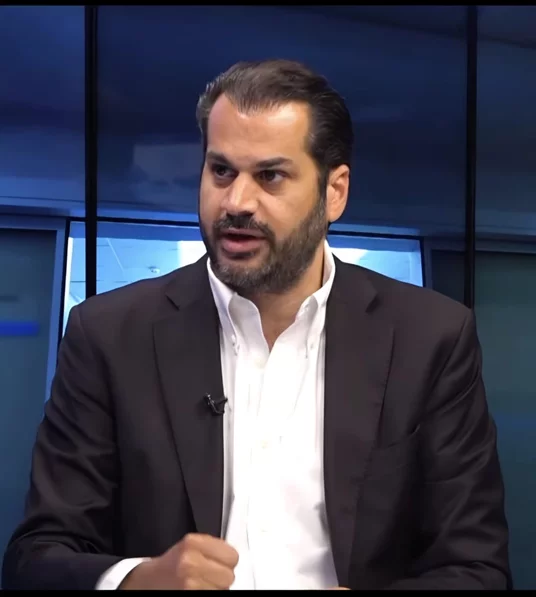 What's up ?
What's up ?Inside Lebanon’s Pharmaceutical Battle: Joseph Ghorayeb on Challenges, Quality, and Trust
20 november 2025 -
 What's up ?
What's up ?The Grand Voyage of the Phoenicians – Bringing Lebanon’s Heritage to Life Lebanon Revives the Phoenicians Through a Groundbreaking Immersive Experience
20 november 2025 -
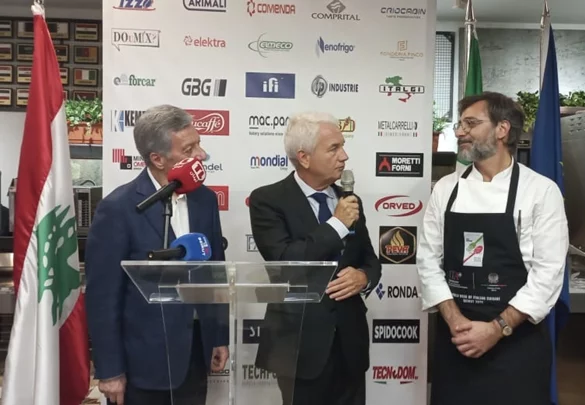 What's up ?
What's up ?ITALIAN CUISINE WEEK IN LEBANON 2025: CELEBRATING TASTE, CULTURE, AND INNOVATION
20 november 2025 -
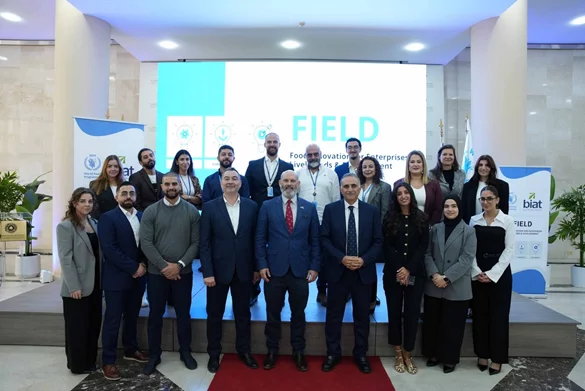 What's up ?
What's up ?WFP and BIAT Launch the FIELD Initiative to Strengthen the Food System and Empower Local Enterprises in North Lebanon
20 november 2025 -
 What's up ?
What's up ?UGG BRINGS ITS AW25 COLLECTION TO LIFE AT AOUT GALLERY IN BEIRUT
19 november 2025 -
 What's up ?
What's up ?Hikmat Abou Zeid: Lebanon’s Renewal Needs Accountability
18 november 2025 -
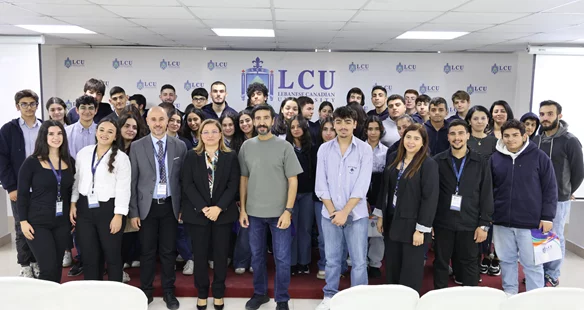 What's up ?
What's up ?Lebanese Canadian University (LCU) Hosts Its Open Doors 2025 Event at the Aintoura Campus, Keserwan
18 november 2025 -
 What's up ?
What's up ?Shining Stars of Hope A Night of Music, Solidarity, and Support
13 november 2025 -
 What's up ?
What's up ?Cinté Soft Beauty Opens New Luxury Beauty Destination in Antelias
10 november 2025 -
 What's up ?
What's up ?Neovitale and Partners Stand with Women Fighting Breast Cancer During Pink October
10 november 2025 -
 What's up ?
What's up ?Lebanese Society of Endocrinology Diabetes and Lipids (LSEDL) Pioneering Call to Action for Diabetes Prevention and Early Intervention in Lebanon
09 november 2025 -
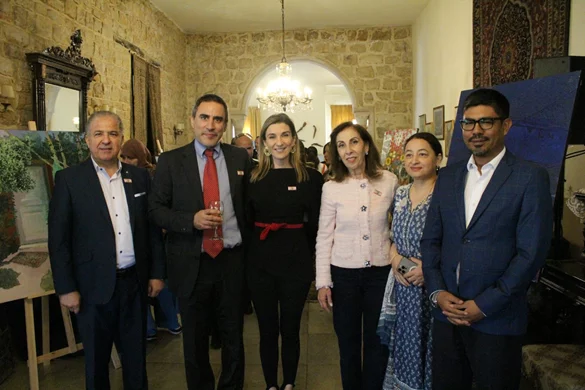 What's up ?
What's up ?Independence Day Celebration in Haret Kanaan – Jezzine
09 november 2025 -
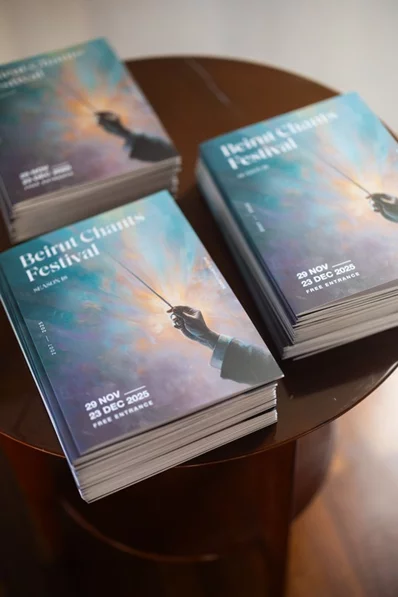 What's up ?
What's up ?Beirut Chants Festival Season 18
08 november 2025 -
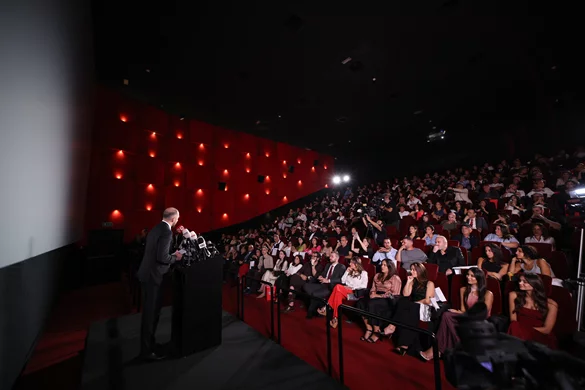 What's up ?
What's up ?Elf Town 2025: Lebanon’s Largest Christmas Experience Flies to Revive Hope, Create Jobs, and Spread the Spirit of Joy
04 november 2025 -
 What's up ?
What's up ?Levain Opens in Ashrafieh: A New Home for Lebanese Wine and Culture
03 november 2025 -
 What's up ?
What's up ?DIAGEO MENA and SADER Group launch ALeKSy, a pioneering Alcohol Legal Knowledge Platform, at Whisky Beirut
02 november 2025 -
 What's up ?
What's up ?Liban Pack Honors Lebanese Youth Innovation and Shines Amid Challenges
01 november 2025



-160530010615034.jpg)
-160530010619496.jpg)

